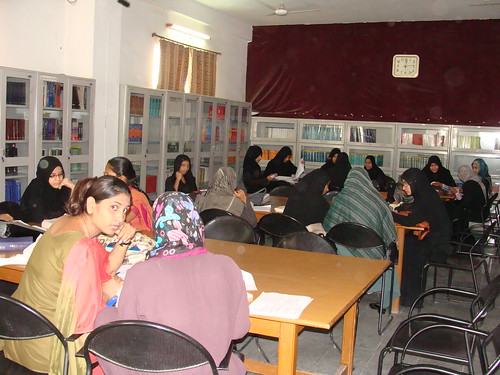By Aaliya Rushdi, TwoCircles.net,
I have often heard my mother saying that at her time, Muslim girls were not allowed to go out of the house when they grew up. They were assigned kitchen and groomed to be a wife and a ‘model woman’ at their in-laws’ house. So, they would not study beyond 5th or 6th class. Girls who learned up to 10th were rare at that time. But then, my grandmother would say that at her time, no girl was sent to school at all. They were given some religious lessons at home and there ended their journey of education. But that was then. Today parents are spending, with pleasure, lots of money on higher education of their daughters.
Sad part of the story is that no girl or woman would ever complain on this. They were happy with the life they lived, because they never knew about the sweetness of education. They kept on believing that the role of the women is only to take care of the family and nothing else. She is not meant to acquire knowledge of the world.

But gradually this thinking began changing. Women got to understand that they should not be deprived of education. They realised that they also have the right to learn and acquire on things as high as sky. So, with this idea they began to move forward in the field of education.
Over 50% of Muslim women in India are illiterate today — literacy being officially defined rather generously to include just about anyone who can read and write a sentence or two. The situation in the northern states, especially in rural areas, is said to be particularly dismal. About 85% of rural north Indian Muslim women are unable to read or write. On the other hand, the situation in the south, especially in urban areas, was found to be considerably better, with 88% urban south Indian women said to be literate.
In Kerala, according to Census 2001, the literacy rate of Muslims was 89.4%, much higher than the national average of 64.8%. The Muslim male literacy rate there is 93.7% while female literacy rate is 85.5%.
The revolution in Kerala did not come in one day. Islamic reformist movements in Kerala, from the late nineteenth century onwards, have played a key role in bridging the sharp dualism between the ulema and the ‘modern’-educated class, in promoting ‘modern’ as well as religious education, including women’s education. They have set up thousands of institutions that cater to the community—not just madrasas and mosques, as in much of north India, but also schools, colleges, hospitals, orphanages, industrial centres, banks, newspapers and so on. In this way, the ulema in Kerala have played a more socially engaged role than their counterparts in the north as far as community work is concerned, says Yoginder Sikand analyzing difference of development in Kerala and north India.

But the change is also attributed to the change of perception of women about themselves. The girls understood the real value of education. The parents, most of them illiterate, began to think that their daughter should get the advantage they were deprived of. Girls also began to be aware on the importance of education. And this led to the modern situation where girls today fill more than half of the allotted seats in many of the reputed colleges. Like men, women also have an idea about their future life. They also have planned for their life.
“Unlike the earlier ages, now girls take education seriously. They also are in the run to make a well planned and well set life as that of the men folk,” says Wajeeha, a student of BDS at a private college in Malappuram district.
“At our time parents would start searching for a suitable groom for the girl by the time she was 15. But nowadays, girls decide their lives themselves. This freedom will give them the ability to face life boldly,” Jameela, a homemaker, says.
Not only this, the aspiration of educated women folk has also changed as far as career is concerned. Earlier they would think of only teaching job after getting higher education. They would think there was no other job which suits a girl. This sort of thinking has also been kept aside by the modern generation.
“In our college everyone has different aims in life. One wants to become doctor, another a call centre executive, one another a journalist and so on goes the list. I myself aim at being a speech therapist,” Jaleesa, an engineering student, says.
Not only the aim of education, the modern girl has really got a clear cut idea of her life, the way she should live it.
